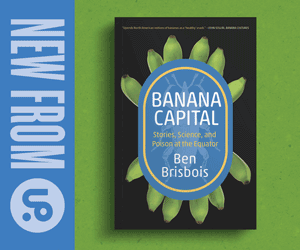Third NDP leadership debate: Two new contestants and a bit more conflict

Photo by Gino Donato/Sudbury Star/Postmedia Network
This past Sunday, the Federal NDP held its third debate in Sudbury, Ontario, the first such meeting in almost two months. The timing of this debate was significant because it was one day after Andrew Scheer’s coronation as leader of the Conservative Party of Canada, and it has welcomed two new participants: Ontario MPP Jagmeet Singh, and retired military officer/veteran’s advocate Pat Stogran. They joined the original four candidates in Sudbury, to tackle a host of issues. The race in some ways is only just beginning now, with the CPC race no longer dominating media attention, and with it unlikely that any other major candidates will jump in.
The debate also comes at a point where we are starting to get a feel for how the contest is shaping up. Polling data from Probit Incorporated indicates that while Charlie Angus has a fairly strong lead (31%), Niki Ashton is within striking distance (24%), while Peter Julian and Guy Caron are pulling respectable levels of support (14 and 11% respectively). Singh and Stogran were included in the poll, but much of the data was collected before their entries. While Stogran is lagging behind with 3%, Singh at 11% is polling in comparative terms to both Caron and Julian, a strong a result given he hadn’t thrown the hat in until very recently.
Beyond this, we have fundraising information from the first quarter of 2017, which shows Angus in a commanding lead, whose approximately $110,000 raised is approaching double the amount of Niki Ashton at around $65,000 and Guy Caron at about $57,000. Julian’s Q1 2017 totals are only $19,000, but he can take solace in the fact that, because he registered in late 2016, his total is about $51,000. When both the polling and fundraising metrics are taken into account, Angus is the current front runner, and the others are fairly bunched, with Ashton likely first among them.
With this context, we entered the Sudbury debate. Below is a series of observations on each candidate’s performance:
**Pat Stogran
As Stogran himself has noted repeatedly, he is an outsider to the NDP and politics more generally. This showed in the debate, as he was at times jumbled and forgetful, and took positions that would be hard to justify within an NDP contest—specifically his glib critique of trade unions. The debate made clear that while Stogran might not yet be ready for prime time, he has an attractive message about the need to fight the connected elites within the Liberal and Conservative parties, and the requirement to replace trickle-down economics with a ‘bubble-up’ alternative that empowers regular Canadians. Most importantly, Stogran brought a certain fire to the debate, which added some conflict, disagreement, and sparring with his competitors. Stogran might not have made himself a contender in Sudbury, but his scrappy style will be endearing to more than a few Canadians.
Guy Caron
In previous debate recaps, one of my concerns about Caron was him running the risk of becoming a single-issue candidate. While his Basic Income (BI) policy has the potential to reach a wide ideological swath of voters, he shoehorned it as the solution to too many disparate issues. In Sudbury, however, we got a wider vision from Caron, who still held up a BI as not only what differentiates him, but what will defeat Trudeau in 2019. Not only did he speak of a radical transformation of the tax system including a tax on wealth, and offered a substantive critique of the Liberal infrastructure bank, but he addressed other policy with more specificity. Beyond all this, Caron was endearing and likeable, and this shined through in the early stages, though I feel he tended to blend into the background as the event went on. A solid performance all in all.
Peter Julian
Julian is last among the four originals in fundraising, and is polling 10 points behind Ashton for second. This is puzzling given that he has been endorsed by numerous members of the federal NDP causing, including key Quebec MP Alexandre Boulerice, and Prairie MP/former United Steelworker staffer Erin Weir. But why has Julian been the most successful in garnering caucus but not popular support? I don’t feel it is policy-based, because Julian has been most committed to an anti-pipeline position which—while surely a turn-off to some NDPers—would be a clarion call to environmentally-inclined members. Ultimately, I feel the issue—and it played out in Sudbury as well—is that Julian isn’t making all of his enviable pieces click. He has the best command of both official languages, a clear base he is aiming to, and he clearly outlines his positions and goals on stage. Perhaps he needs more fire in his delivery, and the drive to attack those those competitors who won’t take a stance on pipelines. Because if he can bring all this together in a way that activates rank-and-file NDPers, he could find himself challenging the front of the pack.
Jagmeet Singh
Jagmeet Singh, in the first days of his formal candidacy, generated more media buzz than all the other candidates combined over the previous months. Many NDPers and Canadians are excited about Singh, his energy, and what he represents for the party and country. In this way, eyes this Sunday might have been on him above anyone else. And while Singh’s charm and affability made an impact, his performance was underwhelming in relation to the hype. The issue with Singh in Sudbury wasn’t any one particular shortcoming, but rather a general sense that he lacked sharpness. In response to the issues befalling small, northern, and rural communities, Singh spoke about how ‘love and understanding’ was the key solution, which came off as an insufficient response. Even the political neophyte Stogran deftly quipped that struggling Canadians in these communities need more than platitudes. This was frustrating because it isn’t as if Singh lacks the record to demonstrate capability. He has fought for the civil liberties of marginalized Canadians, has taken on exploitative temp agencies and price-gouging auto insurance companies, has stood against Ontario’s racist police carding practices, and has a series of labour policies, including an end to unpaid internships, along with a requirement to implement fair wage and hiring policies upon any company receiving federal contracts. Singh in subsequent events must keep his optimistic tone, but get into the nuts-and-bolts of what he plans to offer Canadians. Positively, we saw glimmers of this in Sudbury, where Singh effectively articulated the importance of the labour-NDP relationship, and explained how his victory in Brampton is a model to the party as a whole.
Charlie Angus
Although early, it seems like many NDPers are in Angus’ camp because he speaks in the language and tone of the party faithful. In this debate, Angus had to shine, because it was effectively on his home turf. Largely, he delivered by sticking to his core message of economic, environmental, and indigenous justice, but specifically linking points back to the experience and character of Canada’s north. In this way, he weaved well-told stories into his political points and narratives, and spoke directly to those in the room. He connected the general failure of Trudeau in the region to the unpopular Ontario Liberal policies around Hydro, and while others listed names like Martin Luther King Jr. and Mahatma Ghandi as their inspirations, Angus went local by choosing Shannen Koostachin, a young indigenous girl who fought for a school in Attawapiskat, and died tragically before her dream could be realized. When Angus speaks about indigenous youth, their struggles, and the lies they were sold by Justin Trudeau, his passion is unmatched. It was a strong performance from Angus, who made suggested that while some in the party want a stylish candidate chosen by media consensus, he feels success will come only if the base is empowered to choose its course.
Niki Ashton
Ashton perhaps had the most to lose from fellow thirty-something Singh’s entrance, because he had the potential to eat into her base built on millennial concerns. But as noted above, Singh was unsuccessful at articulating his vision for youth in the Sudbury debate, while Ashton not only reiterated her points, but had in my view the best performance. While she made some errors, including a failure to answer a question on electoral reform, her responses were generally sharp, suited for a northern audience, and always on her message of the NDP needing to offer a bold, democratic socialist alternative to the Trudeau Liberals. Ashton—who recently made a decision to explicitly offer support and solidarity to the Palestinian people—also challenged her competitors to deliver clear stances on the Palestine and the Kinder Morgan pipeline. In so doing, Ashton is attempting to let NDPers know that if they want a left-oriented party, she is the one to provide it. And while some might worry about the electoral suitability of a leftist approach, the failure of Democratic centrism in stopping Donald Trump, and the surge of Jeremy Corbyn’s Labour Party might lend credence to the idea that the NDP is most effective when offering to Canadians a platform clear in its progressive convictions in relation to the two right-of-centre parties.
Ultimately, the debate was the most passionate one to date, and offered the biggest hints of disagreement and conflict between the six candidates. Nevertheless, the process was a cordial one, with contenders giving credit to one another for the work they had done on various key issues, and still beginning numerous points by agreeing with the previous speaker. I think this is due in part to the generalist nature of the questions thus far, but also to the fact that there is a broad set of shared values and policies on the stage. This means that the eventual leader will have a host of strong and agreeable voices upon which to build their front bench.
The next debate is only a couple of weeks away in St. John’s, Newfoundland, where the NDP has no federal seats. It will be imperative there to offer a vision that can push back the Liberal wave that swept Atlantic Canada in 2015.
Christo Aivalis, a member of the CD web committee, is an adjunct professor of history at Queen’s University. His dissertation examined Pierre Trudeau’s relationship with organized labour and the CCF-NDP, and has been accepted for publication with UBC Press. His work has appeared in the Canadian Historical Review, Labour/le Travail, Our Times Magazine, Ricochet and Rankandfile.ca. He has also served as a contributor to the Canadian Press, Toronto Star, CTV and CBC. His current project is a biography of Canadian labour leader A.R. Mosher.










